
Top 10 New Technologies in Agriculture in 2024
New Technologies in Agriculture: In a world where feeding more people is getting tougher, agriculture technology may bring a ray of hope. By 2050, we’ll need 70% more food due to the expected growth of the population. Surprisingly, almost 10% of people go hungry today.
Extreme weather patterns make it hard to save and predict agricultural yield.
But thanks to innovative technologies in the agricultural sector, that will change how we grow, transform, and store our food. This blog takes you on an exciting journey into this innovation. We’ll explore how smart ideas are making agricultural activities better. It’s like stepping into the future, where agriculture gets a high-tech makeover.
List of 10 New Technologies in Agriculture in 2024
1. Satellite Farming
2.Bee Vectoring
3.Precision agriculture
4 Laser Scarecrows
5. Indoor Vertical Farming
6.Cloud Computing
7. Livestock Farming Technology
8. Real-Time Kinematic (RTK) Technology
9. Mini-chromosome Technology
10. Robotics and Automation in Agriculture
1. Satellite Farming Technology in agriculture
Satellite farming is a game-changer in agricultural technology, boosting efficiency and affordability. Utilizing hyperspectral satellites, it provides detailed farm images, reducing the need for expensive sensors. This satellite data encompasses a range of information, like atmospheric conditions, soil health, carbon emissions, and enhancing crop dependability.
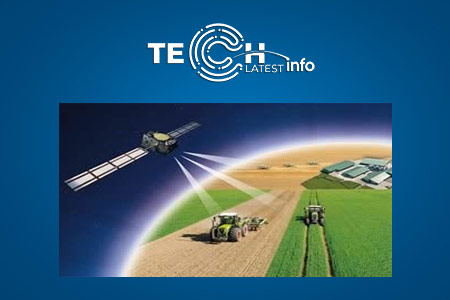
Satellites also contribute to environmental objectives by monitoring deforestation, water quality, and carbon emissions. It helps both developing countries with smallholder farmers and developed countries trying to spend less on technology. Indeed, the future of new technologies in agriculture is reaching new heights.
2. Bee Vectoring Technology in agriculture
Honey bees are incredibly valuable for U.S. crops, worth around $20 billion. These little insects are crucial for our survival, which is why there’s a focus on creating new technologies in agriculture to help protect them and make their pollination work even better.

Bee Vectoring Technologies (BVT) is an innovative system that uses specially raised bees to control crops through pollination. This replaces harmful chemicals with a safe way to protect crops. No need for water spraying or tractors. Instead, bees pick up a bit of pest-control powder on their legs while flying around the field.
This smart agri-tech doesn’t just help crops and soil quality—it also supports sustainable farming and higher yields. BVT’s solution is great for various crops like blueberries and sunflowers and even works for all sizes of farms.
3.Precision agriculture
Precision agriculture is a smart farming strategy that collects and analyzes data, letting farmers control crop factors like moisture, soil quality, and microclimates for better output. It uses large amounts of data received from remote sensing, drones, robots, and automation to make decisions that boost farming in key areas: efficient resource use, sustainability, profit, productivity, and quality.
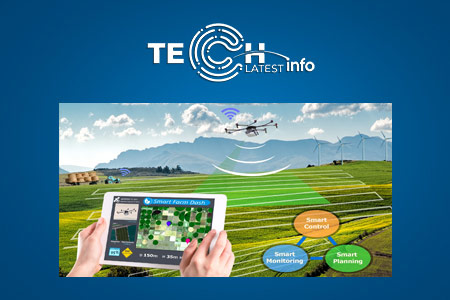
By 2028, experts estimate that the worldwide precision farming market will grow by 13.1% annually and reach $16.35 billion. They think government support and the need for better crop monitoring will make it grow.
4.Laser Scarecrows
Nuisance birds and rodents can cause big problems for farmers trying to grow crops in open fields. In the old days, scarecrows were the go-to solution, but now, farmers are using advanced gadgets with motion sensors to protect their crops.
A savvy researcher at the University of Rhode Island discovered that birds are easily frightened by the color green So, they came up with a laser scarecrow that shoots out green laser light. This light is invisible to us in the sunlight, but it travels up to 600 feet across the field, giving birds a surprise and keeping them away from the crops
5. Indoor Vertical Farming
Indoor vertical farming offers a solution to the limitations of traditional agriculture. This method arranges crops in a controlled space, using vertical shelves to boost yields. These shelves use hydroponic or aeroponic systems, which means growing plants in water or air with nutrients.
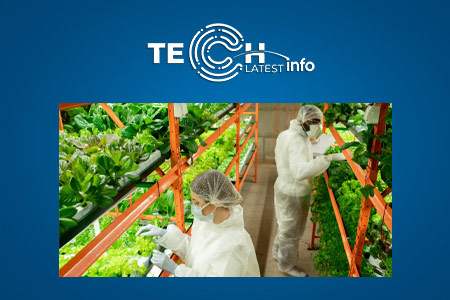
This system also allows control over light, temperature, water, and CO2, which results in healthier yields. This approach uses 70% less water and requires less labor due to robot assistance. Vertical farming reduces transport and emissions, making it a sustainable choice for year-round crop production in urban areas.
6. Cloud Computing Technology
Cloud computing is now playing an integral role in modern farming and shaping the future of new technologies in agriculture. This technology helps farms handle tools, manage lots of data, and develop prediction models all in one place. Which helps them make important decisions regarding farming practices and business.

The integrated cloud computing agriculture system speeds up how fast tech investments pay off. Instead of spending lots of time and money on basic tech setup, farming companies can concentrate on creating new ideas and improving what they’re really good at.
7. Livestock Farming Technology in Agriculture
New livestock technologies are changing how farmers care for animals and run their farms. This new technology in agriculture uses data to help farmers make better decisions and make farming more efficient. Some new ideas for improving livestock farming include automated dairy systems, milk cows without people, and sensors being used to check the milk quality. Automatic cleaning machines keep the farm clean and help prevent diseases.
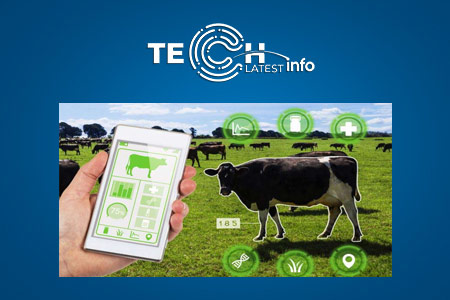
Another innovative technology is Armenta’s non-antibiotic treatment, which uses sound waves to fight cow sickness and helps save money. Automatic feeders give animals the right food in the right amounts. Faromatics uses robots and smart technology for animals’ welfare and efficient productivity.
8. Real-Time Kinematic (RTK) Technology in Agriculture
Letting machines move freely on farmland can damage the soil. A farmer named Robert found a solution. He used RTK technology to manage machine movement. This technology is very accurate, surpassing regular GPS. It guides machines along the correct path, enhancing soil health and increasing farming efficiency. This example highlights the positive impact of technology in agriculture.
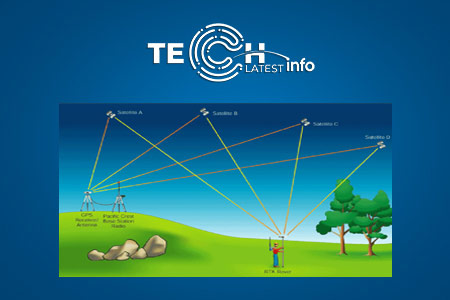
9. Mini-chromosome Technology in Agriculture
With the need to increase crop production for a growing population, the challenge of pest damage is significant. Genetically modified food has faced concerns due to potential health risks and environmental issues. But mini-chromosome technology offers a promising solution.
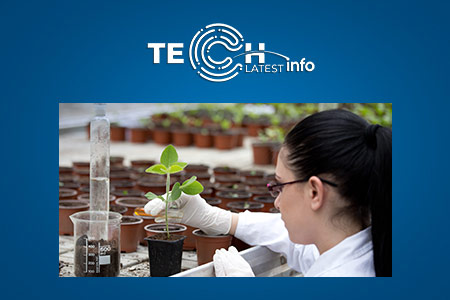
It can improve plant traits without altering genes, making plants more resilient to drought and pests without disrupting their natural growth. In essence, this technology lessens the need for harmful chemicals and enhances crop nutrition, showing the positive impact of technology in agriculture.
10. Robotics and Automation in Agriculture
Farming benefits from automation and robots, making tasks efficient and cost-effective. Smart robots for farming are expected in 2024, capable of accurately harvesting and planting. Farm automation blends machines, sensors, and data to cut human effort and errors, resulting in less labor, better yields, and resource efficiency.

Automated tools like drones and self-driving tractors change how farmers work, allowing them to focus on essential tasks. Just like in any field, automation saves time and reduces direct involvement.
Final Thoughts About New Technologies in Agriculture
In the era of modern farming, the impact of new technologies in agriculture is certainly transformative, from satellite imaging and bee vectoring to precision agriculture and smart automation.
These advancements promise efficient, sustainable, and high-yield farming, paving the way for a tech-driven agricultural future. If you are a farmer or want to know about agriculture’s apps, then you should also read our blog, where we have listed the
Read More: List of Top 10 New Technologies in 2024

